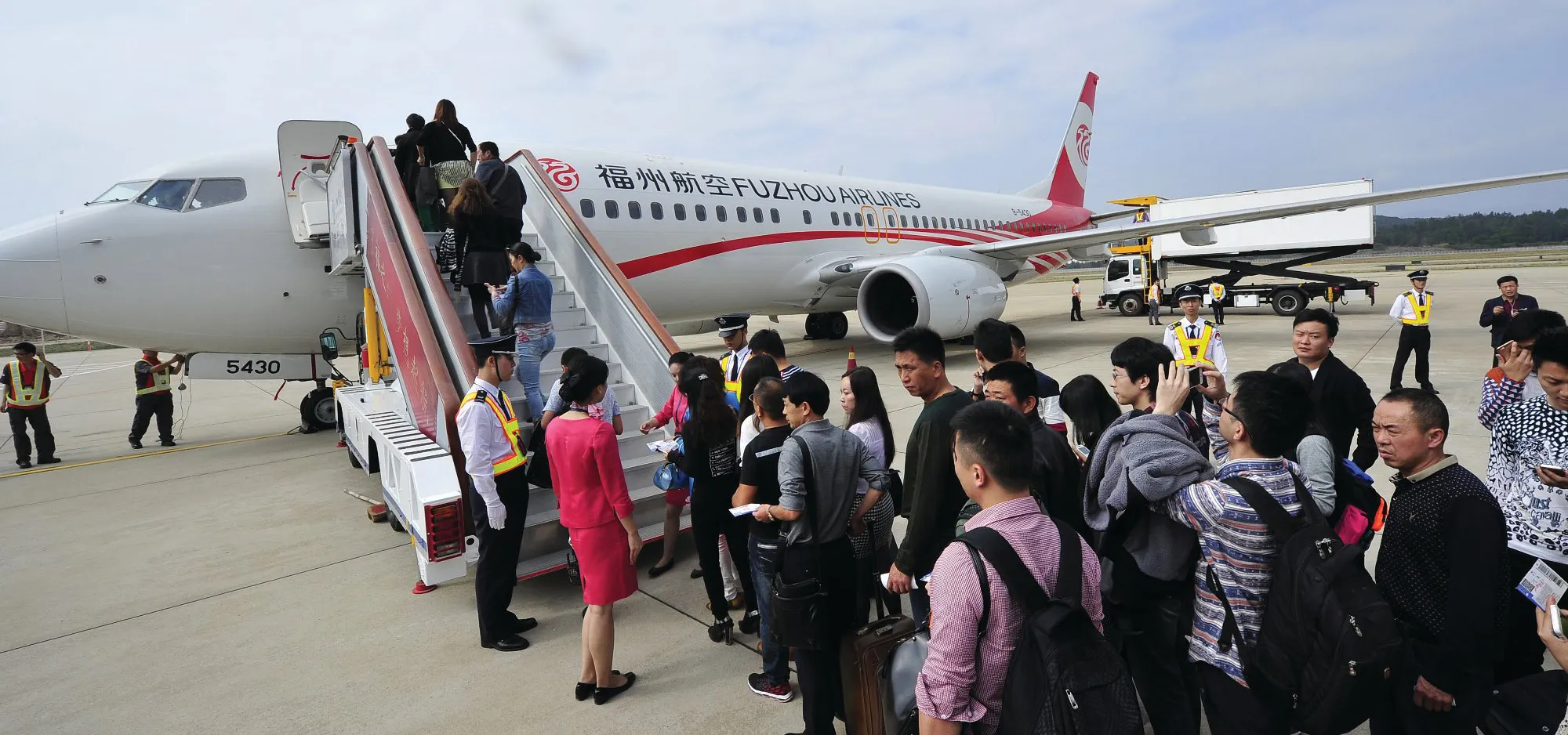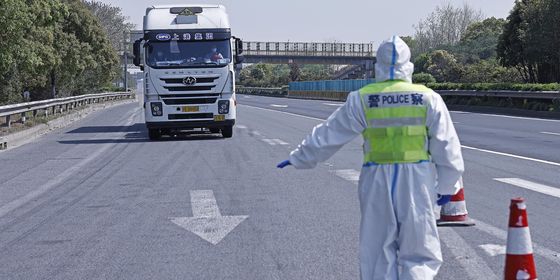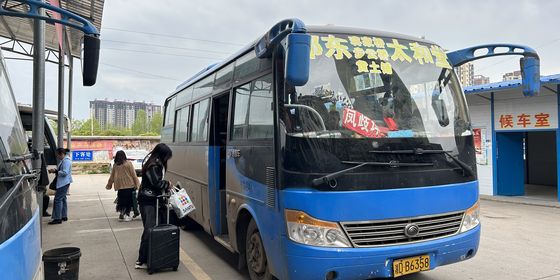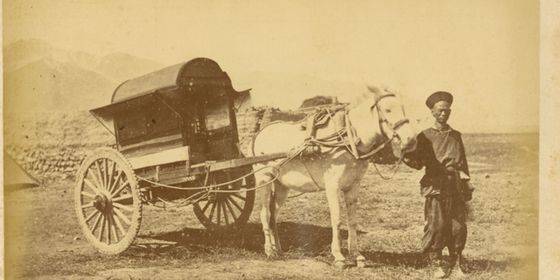Despite surging passenger numbers, airlines in China are struggling with delays, pilot shortages and declining profits
The airline’s name was Lucky Air, but at least one passenger didn’t find this auspicious enough. In October, a 76-year-old woman boarding a flight in Anqing, Anhui province, decided to toss some coins into the jet’s engine as she boarded, in a misguided effort to ensure good fortune.
The flight was grounded for safety reasons, and passengers had to wait until the next morning for a rescheduled flight. It wasn’t the first time this type of behavior has occurred: Another pensioner in Shanghai threw coins into an engine in June, leading to further delays for passengers.
The incident was a literal demonstration of the multitudes of problems that can ground China’s flights—even the toss of a coin. As the industry strains under the weight of its own growth, profits and departure times are getting ever more fickle.
Shortages of pilots and airspace loom, and reform is desperately needed, as even the mightiest players in the sector struggle with an increasingly difficult business environment.
Take China Southern, Asia’s largest airline, which recorded over 60 billion RMB in revenue in the first half of this year, an 11 percent increase over the same period last year. Yet the airline’s profitability decreased, thanks to growing operational costs like jet fuel. The airline still made 2.77 billion RMB in the first half, but that was down 11 percent from 2016.
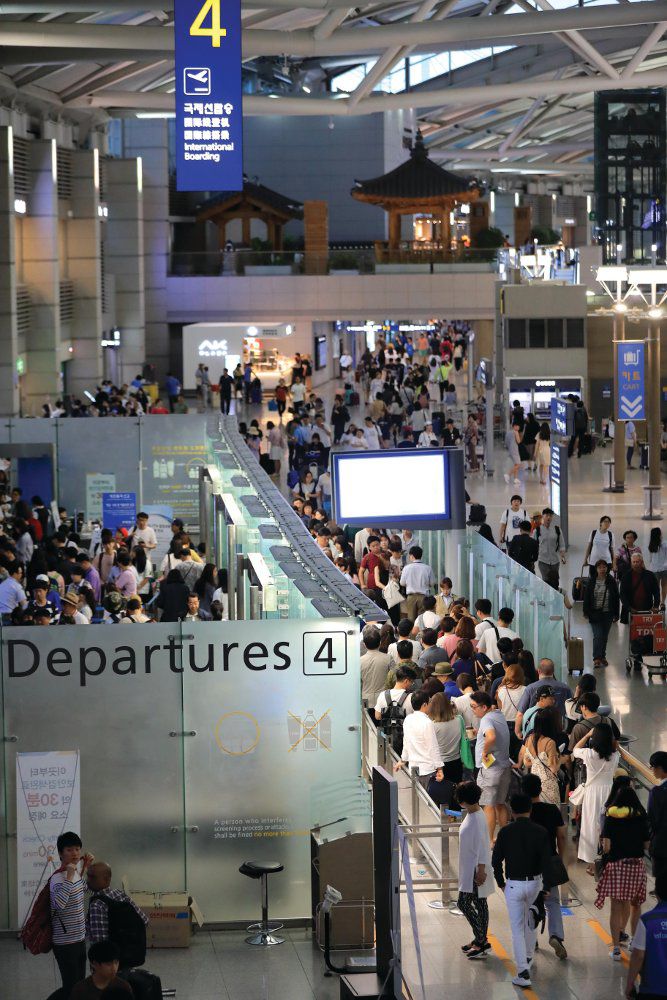
And China Southern is one of the lucky ones. Hong Kong carrier Cathay Pacific is still coming to terms with the billion RMB loss it posted for the first half of this year, in what its own analysts, cited in the South China Morning Post in October, dubbed the airline’s “worst operating results in history.” It came after Cathay had posted a loss of half a billion RMB in 2016.
Cathay is attempting to slash salaries in order to cope (after already shedding 600 staff), but there are already obvious signs of why this measure is a risky one.
It’s difficult to quantify the size of the pilot shortage in China, given the rapid changes in the industry, but analysts have indicated that, on current projections, China will need 5,000 new pilots every year for the next 20 years, and it’s uncertain whether global supply will be able to keep up with that demand.
So when Cathay Pacific’s attempts to cut salaries became known, recruitment company Longreach Aviation organized a roadshow event in what was a overt attempt to poach Cathay Pacific’s undoubtedly disgruntled pilots on behalf of mainland airlines. (The roadshow event, planned for October, was abruptly shut down, with the recruiters blaming “legal issues.”)
The pilot shortage has its upsides, for pilots at least. Pilot Zhang Lin (pseudonym) told TWOC that flying had become a popular career choice, and “one aspect is definitely the high salary.”
“A huge part of that salary comes from experience,” he said. “A captain will earn more than a co-pilot. Salaries across the various airlines are different. Big airlines in China are not the best in the business, in terms of salaries.”
A quick web search reveals multitudes of vacancies. There’s an A320 captain position in Hangzhou, being offered 25,833 USD per month, after tax, with 45 days of paid leave. A first officer is wanted in Tianjin for B747s, for 11,200 USD per month, but with increasing annual bonuses over the term of the three year contract.
“The main reason [for the pilot shortage] is the rapid development of the industry in recent years,” says Zhang. “After graduation, it takes a pilot five to eight years to become a productive asset. The airlines simply don’t have enough pilots in reserve,” he said. “We often hear cases of foreign pilots being recruited as well.”
There are certainly perks for foreign pilots working in China. CNN late last year cited one American pilot, Jeff Graham, who had been working 80 to 100-hour months in the US. After switching to a job based in Shenzhen, he worked 50-hour months for triple the salary.
But even as the number of commercial pilots grows, the airspace they are occupying remains startlingly small. The majority of China’s airspace is controlled by the military due to the defense-oriented aviation system devised in the 1950s.
A 2012 paper in the journal of transportation technologies, written by academics from Northwestern Polytechnical University, in China’s aviation industry capital of Xi’an, makes clear the division between scholars who advocate for a closed-off military-controlled airspace system, and those pushing for a more open one.
This debate has long been at the core of aviation reform. “From the perspective of the use of airspace, its specific characteristics are reflected as that the need for military aviation comes first and the need for civil aviation comes second,” the academics wrote, adding that this is the concept of “absolute security.”
Those pushing for openness still need to acknowledge the importance of the security aspect, but contend that “absolute security” is unrealistic. The paper characterizes this side of the debate as arguing that “the concept of ‘absolute security’ for airspace legislation has caused uneconomic results such as serious waste of airspace resources, and low utilization of airspace, and it is bound to hinder China’s civil air transport industry.”
The friction between these ideologies continues today, etched out in state maps of China’s airspace. As pilot, and former China correspondent James Fallows points out in his book China Airborne, maps of Chinese airspace are considered too sensitive for foreign eyes. “But if you could look, you’d see at once that the areas not controlled by the military are relatively thin, crabbed corridors connecting the biggest cities,” he wrote. “All the rest has been off limits to everyone except the People’s Liberation Army.”
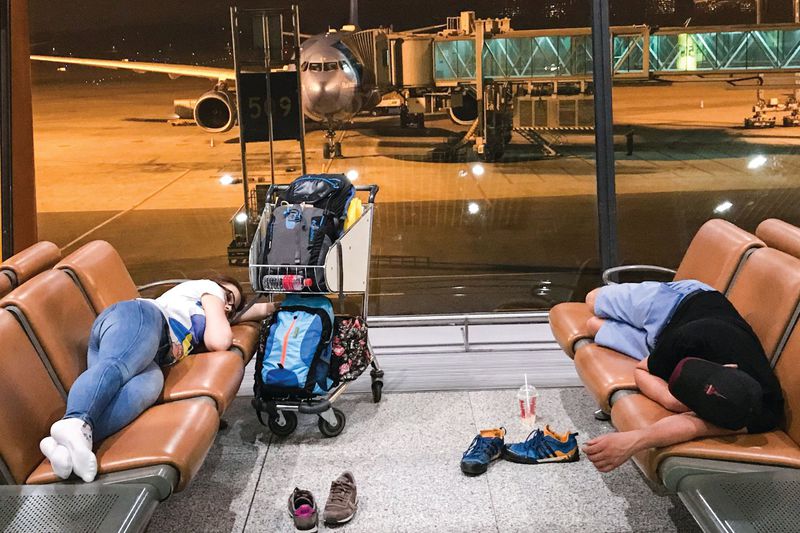
Passengers sleep at the Beijing Capital International Airport. Many passengers choose to stay overnight in order to avoid hotel costs (VCG)
The lack of civilian airspace is partly why the seven worst airports in the world for delays are all in China. Not only are civilian flights kept on narrow corridors, which limits their options in the event they need to change course, but there are also frequent instances of passengers being told that flights have been canceled due to “military exercises.”
The space available for civilian flights has increased, but civilians aren’t privy to knowing how much bigger it’s gotten. “The growth in flight density has been greater than the growth in airspace,” Zhang said. “But I’ve observed over the course of my career and in recent years, both the route density and airspace have increased.”
There have also been openly announced efforts to remedy the issues associated with this shortage of airspace, even if the airspace details themselves remain secret. In May, Cai Jun, deputy director of the Air Traffic Control commission (which is administered by both the State Council and Central Military Commission), told media that a series of proposals were being submitted to deal with the problem by integrating civilian and military airspace bodies. “We understand that reforming the management of the airspace…is an essential need,” Reuters quoted him as saying. “Pushing ahead with civil and military integration is an important measure and a requirement that will help us adjust to the global air traffic management system and accelerate China’s transformation into an aviation power.”
Fallows points out that the successful integration of these civilian and military networks will be a challenging task because it can’t just be achieved through brute willpower—and that the stakes go beyond the aviation sector. “Success in this realm really does require the integration of a wide variety of ‘hard’ and ‘soft’ skills and technologies, and both public and private resources,” he told TWOC. The pilot shortage and integration of military and civilian airspace, according to Fallows, are a microcosm of broader issues China has to contend with as it develops into an advanced economy.
Fallows points out parallels with the evolution of American airspace controls: “By the end of World War II, the US military exercised control over an enormous amount of airspace over America, a natural legacy of broader wartime controls of the economy. From the military’s point of view, it would have been ‘safer’ and more convenient to leave all those controls in place. But the federal government arranged a gradual and substantial shift of airspace from military to civilian and commercial use; otherwise, the airline and general-aviation markets would never fully have developed.”
“The next big test for China’s aerospace ambitions is how the government will handle this choice between maximum ‘security’ and greater opportunities for an important new business to grow,” he said.
Fallows makes the life-or-death stakes of these reforms clear through an incident outlined in China Airborne. While flying as a co-pilot on a tiny four-seat plane traveling between Changsha and Zhuhai in 2006, he encountered mountains that were higher than the altitude they had been assigned by flight control. Thus, they needed to radio for permission to climb higher. “On the GPS-based moving map in the cockpit, we saw the ridge draw closer. We couldn’t legally turn around, since that would be deviating from our clearance. Nor—again, without breaking rules—could we decide to climb on our own,” he wrote.
“If we kept on straight and level, within ten minutes we’d crash. Then eight. Then six.” Declaring an emergency and turning away was one option, but it would have severe repercussions, particularly because, as it turned out, they were being tailed by a military jet.
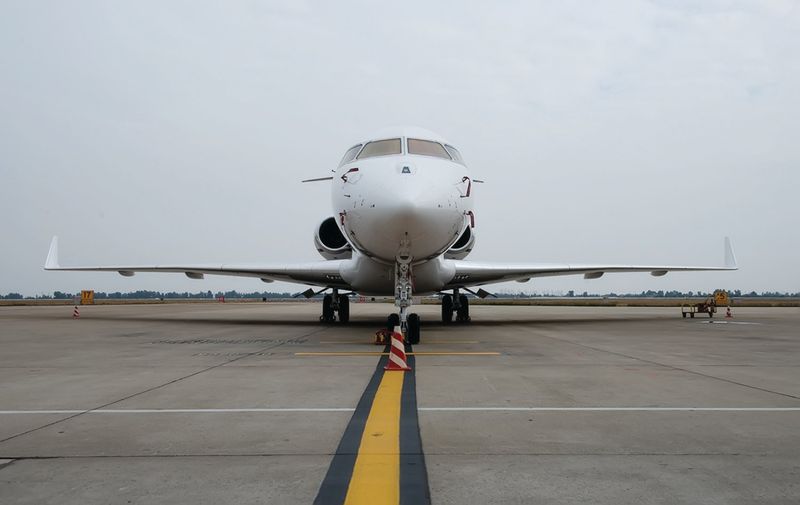
A Global 6000 Bombardier business aircraft owned by Wenzhou businessman Xu Yu, purchased for about 400 million RMB in 2014 (VCG)
Despite repeated radio requests, they were greeted with silence. It took a Japan Airlines pilot, who had been eavesdropping, to intercede on their behalf to get the attention of air traffic controllers, who then granted them permission. Fallows never found a reason for the delay, but suspected that the flight controllers simply hadn’t dealt with private pilots before, so they didn’t know what to do.
In the decade since that incident, the situation has improved dramatically, but delays are still mounting at Chinese airports. In the first six months of 2017, the proportion of flights arriving on time was 71 percent, six percentage points lower than the same period in 2016, the South China Morning Post reported. In June 2017 alone, barely half the flight were on time.
A quarter of the hazards were reported to be caused by “military activity” while the biggest proportion were caused by weather. Zhang points out that within China’s large landmass, there are vast differences in landscape and significant potential for weather delays. A fairly recent headache has been added to the woes of flight controllers, with 800 flights delayed in the first half of the year due to drones flying too close to airports.
There is also the threat of “black flights” by unregistered aircraft. In 2014, Wang Xia, secretary-general of the China General Aviation Committee, told state media that about 60 percent of more than 3,300 general aviation aircraft in China were unregistered, partly due to the disorganized nature of the registration process. These flights can pose a severe hazard to flight safety and also cause delays, though few garner media attention. An incident 2010 involved a black flight leaving Jiaxing, near Shanghai. The plane was classed as a UFO and caused multiple flights out of Shanghai Pudong Airport to be delayed.
And then, there are the delays caused by passengers. Due to ongoing media reports of unruly mobs (and coin-tossing grannies) at Chinese airports, Chinese travelers have developed an unfortunate reputation of being troublesome. This is perhaps unfair, given the massive numbers of travelers and relatively small numbers of incidents, but the incidents do hint at deeper problems. There have been constant reports of passengers attempting to open emergency doors during flights, abuse of flight attendants, fist-fights between angry passengers, and demands for compensation for a variety of inconveniences, as passengers take to the sky in ever greater numbers for the first time.
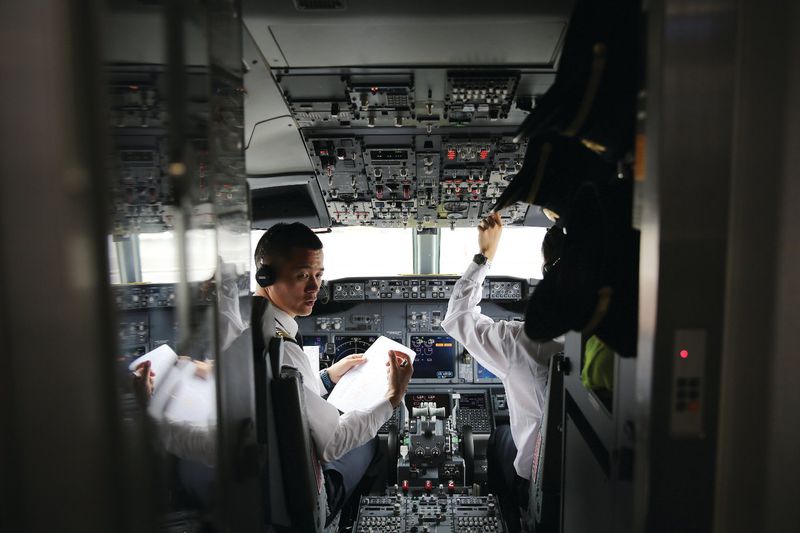
China Southern Airlines Pilot Li Han (left), who has clocked more than 12,000 flight hours, conducts pre-flight checks with his co-pilot (VCG)
Meanwhile, China’s ultra-rich look unlikely to take flights on the main airlines as the private jet industry gets off the ground. In October, China Daily cited Thomas Flohr, founder of private jet company Vistajet, as saying that 17 percent of their customers now come from China and that the proportion is growing. “Private jet business on the Chinese mainland is still relatively new, and it is our great focus within the Asia-Pacific region,” he said, adding that the minimum net worth of the company’s customers is around 200 million USD, and they tend to be between their late 20s and 50s.
Zhang believes that growth in private flights is likely to be one of the biggest changes in the industry in the coming years. “There are still many factors affecting the development of this industry, such as purchasing, operation and maintenance, airspace and the state of airport openness, difficulty requesting and getting approval for flight plans, and so on,” he said. “But the number of business jet flights has been growing steadily, and aircraft manufacturers are eyeing China as a growing market.”
It would seem that while China’s aviation sector has well and truly taken off, where it heads next is still up in the air.
Flight Risk is a story from our issue, “Cloud Country.” To read the entire issue, become a subscriber and receive the full magazine. Alternatively, you can purchase the digital version from the App Store.






